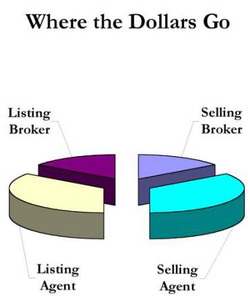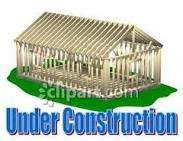
Why use a REALTOR?
With all the online information, why do 88% of all transactions use realtors?
With all the online information, why do 88% of all transactions use realtors?
The following explains my VALUE-ADDED Service throughout the real estate process:
Comprehensiveness The list is by no means an attempt to set forth a complete list of services as these may vary within each brokerage and each market. Many Realtors routinely provide a wide variety of additional services that are as varied as the nature of each transaction.
By the same token, some transactions may not require some of these steps to be equally successful. However, most would agree that given the unexpected complications that can arise, it’s far better to know about a step and make an intelligent, informed decision to skip it, than to not know the possibility even existed.
The variety of brokerage business models in today’s real estate industry affords the homeowner a greater range of options than ever before.
But no matter which option is chosen, before signing a Listing Agreement or otherwise engaging the services of a Realtor and agreeing to compensate them, homeowners should understand exactly what services will, or will not, be provided.
Not every real estate agent or broker is a Realtor. That term and the familiar Block “R” logo are trademarked by the National Association of Realtors and can only be used by those are Realtor members through their local association of Realtors.
By the same token, some transactions may not require some of these steps to be equally successful. However, most would agree that given the unexpected complications that can arise, it’s far better to know about a step and make an intelligent, informed decision to skip it, than to not know the possibility even existed.
The variety of brokerage business models in today’s real estate industry affords the homeowner a greater range of options than ever before.
But no matter which option is chosen, before signing a Listing Agreement or otherwise engaging the services of a Realtor and agreeing to compensate them, homeowners should understand exactly what services will, or will not, be provided.
Not every real estate agent or broker is a Realtor. That term and the familiar Block “R” logo are trademarked by the National Association of Realtors and can only be used by those are Realtor members through their local association of Realtors.
Pre-Listing Activites:

- Make appointment with seller for listing presentation
- Send seller a written or e-mail confirmation of listing appointment and call to confirm
- Review pre-appointment questions
- Research all comparable currently listed properties
- Research sales activity for past 12 months from MLS and public records databases
- Research “Average Days on Market” for this property of this type, price range and location
- Download and review property tax roll information
- Prepare “Comparable Market Analysis” (CMA) to establish fair market value
- Obtain copy of subdivision plat/complex lay-out
- Research property’s ownership & deed type and if all permits were granted CO's
- Research property’s public record information for lot size & dimensions
- Research and verify legal description
- Research property’s land use coding and deed restrictions
- Research property’s current use and zoning
- Verify legal names of owner(s) in county’s public property records
- Prepare listing presentation package with above materials
- Perform exterior “Curb Appeal Assessment” of subject property
- Compile and assemble formal file on property
- Confirm current public schools and explain impact of schools on market value
- Review listing appointment checklist to ensure all steps and actions have been completed
Listing Appointment Presentation
- Give seller an overview of current market conditions and projections
- Review agent’s and company’s credentials and accomplishments in the market
- Present company’s profile and position or “niche” in the marketplace
- Present CMA Results To Seller, including Comparables, Solds, Current Listings & Expired Listings
- Offer pricing strategy based on professional judgment and interpretation of current market conditions
- Discuss Goals With Seller To Market Effectively
- Explain market power and benefits of Multiple Listing Service
- Explain market power of web marketing, IDX, Zillow & zestimates and REALTOR.com
- Explain the work the brokerage and agent do “behind the scenes” and agent’s availability on weekends
- Explain agent’s role in taking calls to screen for qualified buyers and protect seller from curiosity seekers
- Present and discuss strategic master marketing plan
- Explain different agency relationships and determine seller’s preference
- Review and explain all clauses in Listing Contract & Addendum and obtain seller’s signature
Once Property is Under Listing Agreement:
- Measure overall and heated square footage
- Measure interior room sizes
- Confirm lot size via owner’s copy of certified survey, if available
- Note any and all unrecorded property lines, agreements, easements
- Obtain house plans, if applicable and available
- Review house plans if available or make floorplans and put in MLS as photo. People LOVE floorplans
- Prepare showing instructions for buyers’ agents and agree on showing time window with seller
- Obtain current mortgage loan(s) information to ensure house is not "underwater"
- Identify Home Owner Association manager if applicable
- Verify Home Owner Association Fees with manager – mandatory or optional and current annual fee
- Order copy of Homeowner Association bylaws, if applicable
- Research and verify city sewer/septic tank system
- Research verify if private or public roads
- Verify if seller has transferable Termite Bond
- Ascertain need for lead-based paint disclosure
- Prepare detailed list of property amenities and assess market impact
- Prepare detailed list of property’s “Inclusions & Conveyances with Sale”
- Compile list of completed repairs and maintenance items
- Explain benefits of Home Owner Warranty to seller
- Assist sellers with completion and submission of Home Owner Warranty Application
- When received, place Home Owner Warranty in property file for conveyance at time of sale
- Have extra key made for lockbox
- Arrange for installation of yard sign
- Assist seller with completion of Seller’s Disclosure form
- “New Listing Checklist” Completed
- Review results of Curb Appeal Assessment with seller and provide suggestions to improve salability
- Review results of Interior Décor Assessment and suggest changes to shorten time on market
- Load listing into transaction management software program

Entering Property in Multiple Listing Service Database
- Prepare MLS Profile Sheet — Agents is responsible for “quality control” and accuracy of listing data
- Enter property data from Profile Sheet into MLS Listing Database
- Proofread MLS database listing for accuracy – including proper placement in mapping function
- Add property to company’s Active Listings list
- Provide seller with signed copies of Listing Agreement and MLS Profile Sheet Data Form within 48 hours
- Take additional photos for upload into MLS and use in flyers. Discuss efficacy of panoramic photography
MARKETING THE LISTING
- Create print and Internet ads with seller’s input
- Coordinate showings with owners, tenants, and other Realtors®. Return all calls – weekends included
- Install electronic lock box if authorized by owner. Program with agreed-upon showing time windows
- Prepare mailing and contact list
- Have PROFESSIONAL photos done and either 3D Matterport or Interactive Floorplan
- Order “Just Listed” postcards for 60 closest neighbors
- Prepare flyers & brochures *** I will bring many samples to our listing appointment!
- Review comparable MLS listings regularly to ensure property remains competitive in price, terms,conditions and availability
- Prepare property marketing brochure for seller’s review
- Arrange for printing or copying of supply of marketing brochures or fliers
- Share marketing brochures in all office meetings
- Upload listing to company and agent Internet site
- Advise Network Referral Program of listing
- Provide marketing data to buyers coming through international relocation networks
- Provide marketing data to buyers coming from referral network
- Provide “Special Feature” cards for marketing, if applicable
- Submit ads to company’s participating Internet real estate sites & make sure Zillow zestimate is accurate as can be!
- Price changes conveyed promptly to all Internet groups
- Reprint/supply brochures promptly as needed
- Loan information reviewed and updated in MLS as required
- Feedback e-mails sent to buyers’ agents after showings
- Review weekly Market Study
- Discuss feedback from showing agents with seller to determine if changes will accelerate the sale
- Place regular weekly update calls to seller to discuss marketing & pricing
- Promptly enter price changes in MLS listing database
MORE TO COME>>>>WEBSITE IS STILL UNDER CONSTRUCTION!!! Go to Buying process and Development/Disclosure for my "value added" on buy side!

Through it all, the personal and professional commitment of the Realtor is to ensure that a seller and buyer are brought together in an agreement that provides each with a “win”. Each REALTOR is required to keep their ethical training and standards to ensure transactions are fair and equitable.
For most full-service brokerages, they receive no compensation unless and until the sale closes. By contrast, there are firms that offer “limited services” in exchange for an up-front flat fee, or perhaps offer a menu of pay-as-you-go or “a la’ carte” options. Some even offer a sliding scale ranging from limited to full service. In these cases, the compensation of the Realtor is based on these reduced service levels with the seller bearing full responsibility for all the other steps and procedures in the selling process. In short, the marketplace truism is that “you get what you pay for.”
For most full-service brokerages, they receive no compensation unless and until the sale closes. By contrast, there are firms that offer “limited services” in exchange for an up-front flat fee, or perhaps offer a menu of pay-as-you-go or “a la’ carte” options. Some even offer a sliding scale ranging from limited to full service. In these cases, the compensation of the Realtor is based on these reduced service levels with the seller bearing full responsibility for all the other steps and procedures in the selling process. In short, the marketplace truism is that “you get what you pay for.”
HOW DO REALTORS GET PAID?

The Realtor will be paid a commission at closing which is based on the final sales price of the home. If you are a buyer, no money will come out of your pocket (unless you have entered into a special agreement with that Realtor). If you are a seller, the commission will come out of the proceeds of the sale. There is no set commission amount, but typically commissions can range anywhere from 5-10% (more or less) of the final sales price, depending upon what is negotiated at the time of the Listing Agreement. If there is more than one Realtor involved in the transaction (one representing the buyer and one representing the seller), the commission is then split between the two. For example, Bob and Sue Jones have a Listing Agreement for their home with a listing price of $150,000, and have agreed to pay their Realtor, Rhonda, a commission of 6% of the final sales price from the proceeds of the sale. They enter into a contract with Dave and Sally Owens with a final sales price of $145,000. Dave and Sally are represented by Realtor Rick. At closing, Realtor Rhonda and Realtor Rick would split the $8,700 ($145,000 x 6%), or $4,350 each. However, Rhonda and Rick are also in contract with each of their brokers (the “company” they work for). Each broker takes a “split” of the commission (usually 50%), which pays for errors & omissions insurance, marketing for the company (and listings), operational expenses, etc. In this case, Rhonda and Rick would each take home approximately $2,175. From that amount, they would then pay any special marketing efforts they used for the transaction, their Association of Realtor dues/fees, etc. Also, as Realtors are considered independent contractors, they would also be required to pay any personal expenses such as income taxes, health insurance, etc
